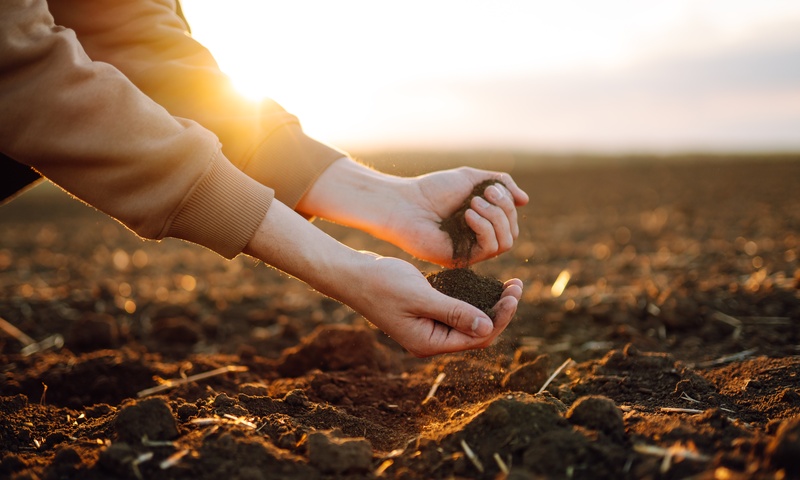A Glance at the Different Types of Farm Soil

The foundation of successful farming is learning about soil type, structure, and management. The soil is more than just the dirt the seeds live in; it’s a living ecosystem that directly influences crop growth, water absorption, and nutrient retention.
Whether you’re a seasoned farmer, a rancher, or someone exploring farmland ownership, knowing all you can about soil types and how to work with them can pave the path to successful harvesting. Here’s a quick glance at the different types of farm soil, including how to manage them.
Sand, Silt, Clay, and Loam
Farm soil is typically classified into four primary types: sand, silt, clay, and loam. Each one differs in its texture, drainage, and ability to hold nutrients.
- Sand is comprised of large, gritty particles and drains quickly, which prevents waterlogging but can also lead to water shortages for crops. Its loose structure works well for root crops, such as carrots and potatoes.
- Silt has smaller particles than sand and retains more water, which is ideal for wheat and corn. Its soft, smooth texture also makes it easy to work with, but it’s prone to erosion.
- Clay consists of fine, tightly packed particles that allow it to store water and nutrients exceptionally well. However, heavy clay holds too much water, leading to poor drainage. Crops like rice thrive in clay.
- Loam is a balanced mix of sand, silt, and clay. It combines good drainage with excellent nutrient retention and works for a wide variety of crops, including vegetables, fruits, and grains.
Recognizing Soil Characteristics and Best Uses
Each type of farm soil has distinct features that influence what crops grow best. Sand’s quick-drying nature means you’ll need to irrigate more often, while clay soil demands careful water management to prevent flooding.
Silt, with its moderate drainage and rich fertility, provides a middle ground. With loam, farmers benefit from its versatility and ease of cultivation, making it the preferred soil for diverse crops.
Managing Fertilizer for Optimal Yield
Proper soil management has a lot to do with what you add to it. Fertilizer management tailored to your soil type and crop needs is essential for maximizing yields. Sandy soils benefit from frequent, smaller applications of fertilizer since nutrients can wash away quickly.
Clay and loam soils hold nutrients better, which allows for more controlled feeding schedules. Pairing fertilizer with organic materials like compost can further enrich the soil, creating healthier and more productive crops.
Farming success starts from the ground up—quite literally. Knowing your soil type, its characteristics, and how to care for it ensures healthier crops and higher yields. Whether it’s understanding the balance of sand, silt, clay, and loam or managing pH and fertility, better soil knowledge leads to better farming decisions.
Would you like to receive similar articles by email?





